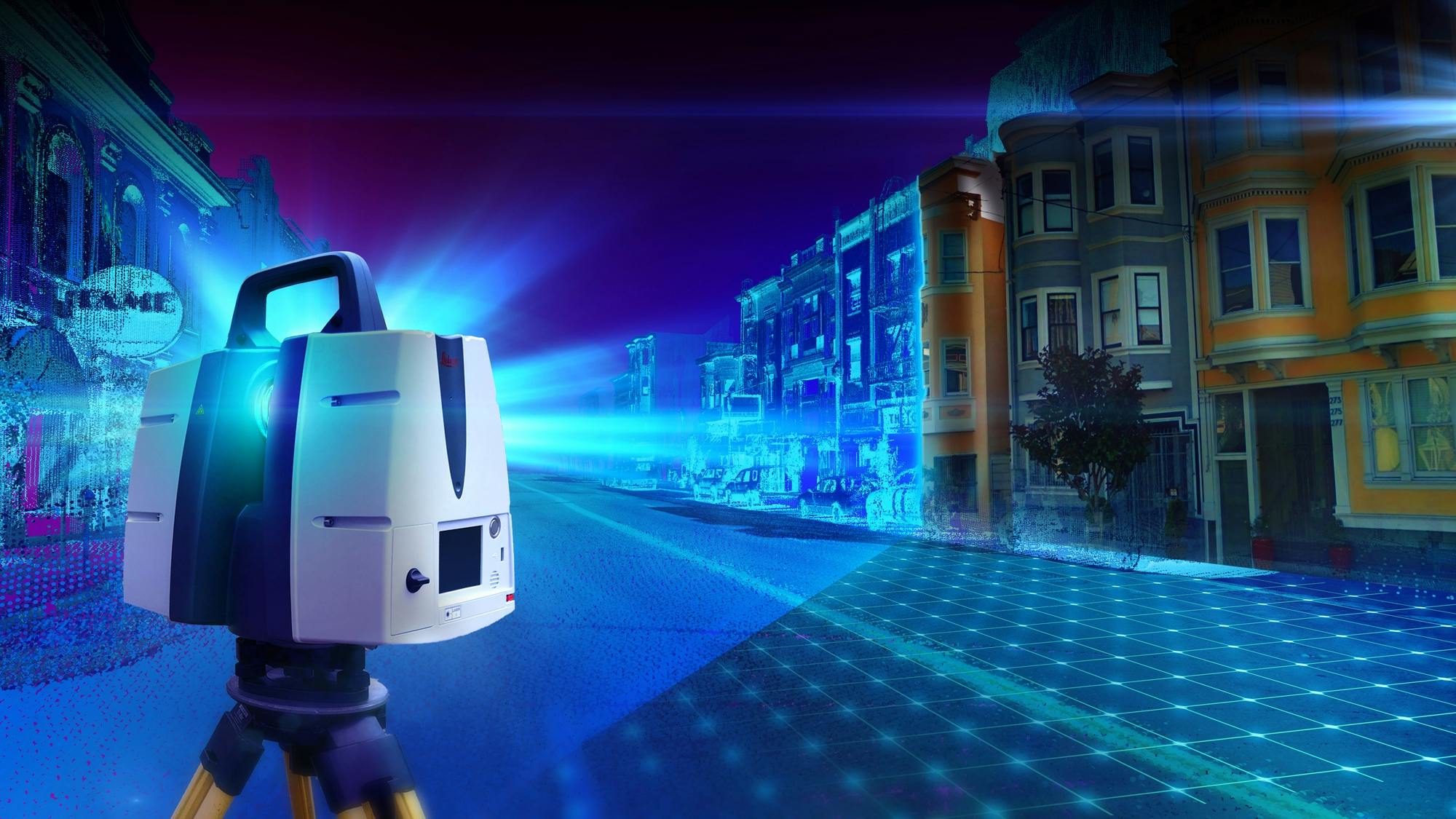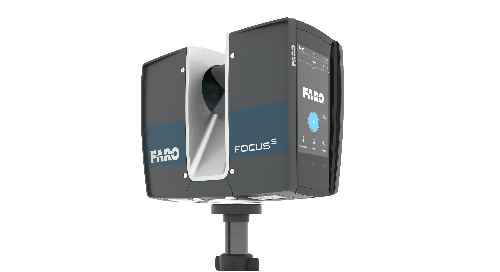Enhancing Manufacturing Processes: The Effect of 3D Laser Scanning on Quality Assurance
3D laser scanning modern technology is transforming quality assurance in manufacturing. By providing high-resolution information and exact measurements, it makes it possible for suppliers to identify deviations from specs with simplicity. This innovation not only improves assessment processes yet also enhances functional efficiency. 3D Scanning. However, the implementation of this modern technology comes with its very own collection of obstacles. Discovering these elements exposes the broader implications for sectors and the future landscape of manufacturing

Understanding 3D Laser Scanning Modern Technology
3D laser scanning technology has actually progressed considerably in current years, its fundamental principle stays straightforward: catching the accurate geometry of objects utilizing laser beams. This technology uses laser light to gauge distances in between the scanner and various points on an item's surface. The data gathered is after that processed to create a detailed 3D model, precisely reflecting the measurements and contours of the scanned things.
Typically, 3D laser scanners can be classified right into two primary kinds: call and non-contact scanners. Get in touch with scanners literally touch the things to collect dimensions, whereas non-contact scanners make use of laser beams to capture information from a distance. The versatility of this modern technology enables its application throughout numerous sectors, consisting of production, building and construction, and design. Its capacity to produce high-resolution designs helps with quality assurance, reverse design, and rapid prototyping, ultimately improving style precision and efficiency in manufacturing procedures.
Benefits of 3D Laser Scanning in Manufacturing
As manufacturers seek to boost effectiveness and precision in their procedures, the advantages of 3D laser scanning have come to be significantly apparent. This ingenious innovation permits very accurate and rapid dimensions of complicated geometries, considerably decreasing the moment needed for quality checks. By recording in-depth information, manufacturers can recognize discrepancies early in the manufacturing process, therefore lessening waste and revamp prices.
3D laser scanning assists in better design recognition, allowing engineers to compare as-built problems with initial specifications. This capability ensures that any type of discrepancies are quickly attended to, improving overall item quality. In enhancement, the modern technology supports the creation of electronic doubles, which can be used for simulations and procedure optimizations. Because of this, makers not only raise their operational efficiency however likewise enhance their competitive benefit out there. Overall, the assimilation of 3D laser scanning stands for a transformative action toward accomplishing greater requirements in producing quality assurance.
Assimilation of 3D Laser Scanning Into Quality Assurance
Integrating 3D laser scanning right into quality assurance processes boosts the accuracy and efficiency of examinations throughout manufacturing. This technology makes it possible for makers to capture in-depth, high-resolution information of parts and assemblies, enabling exact dimensions and comparisons against style specifications. By utilizing 3D laser scanning, companies can determine discrepancies from tolerances better, which is essential for preserving item honesty.

Real-World Applications and Situation Studies
Real-world applications of 3D laser scanning in manufacturing demonstrate its transformative effect throughout various sectors. As an example, aerospace business utilize this modern technology to carry out precise evaluations of parts, ensuring they meet stringent security standards. A notable situation involved a leading aircraft manufacturer that utilized 3D laser scanning to enhance its quality assurance processes, considerably reducing examination times and errors.
In check out here the automobile industry, manufacturers have actually applied laser scanning to develop digital doubles of their cars, making it possible for real-time adjustments throughout production. One automobile company reported a 30% decrease in rework expenses after integrating this modern technology into their production line.
Additionally, in the durable goods market, business are using 3D laser scanning for fast prototyping, enabling for quicker iterations and boosted item layouts. These applications highlight just how 3D laser scanning not only improves precision however likewise boosts performance and advancement see post across multiple production domains.
Overcoming Challenges in Execution
Carrying out 3D laser scanning in manufacturing presents numerous challenges that companies should navigate to totally realize its advantages. One significant hurdle is the preliminary cost of equipment and software program, which can hinder companies from adopting this innovation. In addition, integrating 3D laser scanning into existing process calls for getting over resistance to change among workers, requiring comprehensive training programs to ensure efficiency. Information monitoring additionally poses a difficulty, as the high quantity of information produced by 3D scanning need to be effectively refined and assessed to acquire workable understandings. Compatibility concerns with heritage systems might prevent smooth assimilation, requiring prospective upgrades or adjustments. Dealing with these difficulties is crucial for manufacturers aiming to enhance quality control and maximize production processes. By establishing clear methods for training, financial investment, and data management, firms can alleviate these barriers and launch the transformative possibility of 3D laser scanning in their operations.
Future Trends in 3D Laser Scanning for Production
As making continues to develop, the integration of 3D laser scanning with raised automation is anticipated to transform manufacturing procedures. Enhanced information analytics will certainly play an important role in boosting and enhancing workflows top quality control. These patterns highlight the potential for higher efficiency and precision in making atmospheres.

Increased Automation Integration
Although the combination of automation in production has actually been gradual, the future of 3D laser scanning is poised to accelerate this pattern substantially. As producing processes end up being progressively complicated, the need for specific, real-time dimensions expands. 3D laser scanning modern technology offers automated information capture, reducing labor costs and minimizing human error. This integration permits suppliers to simplify quality more tips here assurance procedures, making it possible for quick discovery of variances in manufacturing. Furthermore, the positioning of 3D laser scanning with robotics and automated systems helps with seamless operations, boosting total performance. As makers embrace these advanced technologies, they can anticipate enhanced accuracy and productivity, placing themselves competitively in a quickly progressing market. The synergy in between automation and 3D laser scanning notes a considerable leap onward in making advancement.
Improved Information Analytics
The assimilation of automation has led the way for improvements in data analytics within the domain name of 3D laser scanning. Suppliers are progressively leveraging sophisticated formulas and artificial intelligence strategies to examine vast datasets created by laser scans. This improved information analytics ability enables real-time tracking of manufacturing procedures, enabling the recognition of problems and inconsistencies better than typical techniques. Anticipating analytics can visualize possible issues, substantially decreasing downtime and boosting overall effectiveness. The ability to imagine information in 3 dimensions supplies much deeper insights right into manufacturing workflows, promoting far better decision-making. As 3D laser scanning technology remains to advance, the role of data analytics will certainly become increasingly important in driving technology and maintaining competitive benefit in manufacturing.
Frequently Asked Concerns
What Industries Benefit one of the most From 3D Laser Scanning?
The sectors that profit most from 3D laser scanning consist of production, building and construction, aerospace, automotive, and healthcare. These sectors utilize the technology for precision dimensions, top quality guarantee, and reliable layout procedures, substantially boosting total functional effectiveness.
Just How Does 3D Laser Scanning Contrast to Standard Dimension Approaches?
3D laser scanning supplies higher precision and rate contrasted to typical dimension approaches. It captures thorough geometries promptly, decreasing human error and helping with far better analysis, which ultimately improves total quality assurance in numerous markets.
What Is the Expense of Applying 3D Laser Scanning Technology?
The cost of carrying out 3D laser scanning modern technology varies considerably, typically varying from $10,000 to $100,000, relying on tools, software program, and training. Organizations needs to weigh these costs against possible performance and high quality enhancements.
Exist Details Software Demands for 3D Laser Scanning?
Yes, 3D laser scanning calls for certain software, consisting of information processing and modeling applications. Usual choices encompass CAD software program, factor cloud processing devices, and specialized applications that promote the combination and analysis of checked information for ideal outcomes.
The length of time Does a Regular 3D Laser Scanning Process Take?
A common 3D laser scanning procedure can take anywhere from a couple of minutes to numerous hours, depending upon variables like the size of the things, intricacy of the environment, and required level of information for accuracy.
3D laser scanning modern technology is changing quality control in manufacturing. 3D laser scanning innovation has actually advanced significantly in current years, its essential concept continues to be simple: recording the specific geometry of items making use of laser light beams. Incorporating 3D laser scanning right into quality control procedures improves the accuracy and efficiency of examinations throughout manufacturing (3D Scanning). 3D laser scanning technology provides automated data capture, decreasing labor expenses and reducing human mistake. The cost of applying 3D laser scanning technology varies significantly, typically ranging from $10,000 to $100,000, depending on devices, training, and software